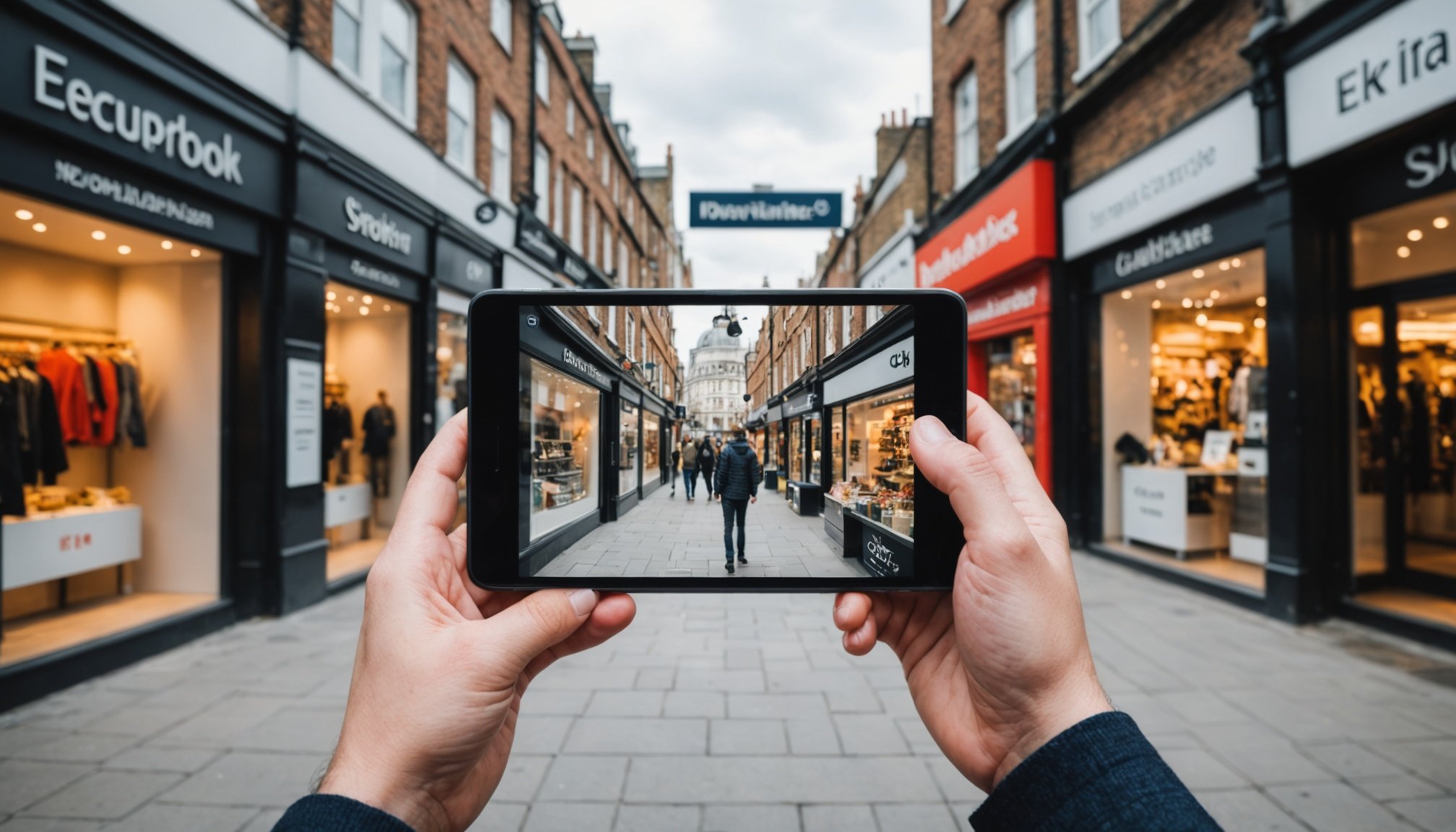Understanding Augmented Reality in Retail Promotions
Augmented Reality (AR) is revolutionizing how customers interact with products, especially within UK retail promotions. But what exactly is AR, and how is it applied in retail? AR overlays digital elements onto the real world through devices like smartphones, offering an interactive experience. In retail, AR can be used for virtual try-ons, interactive product demonstrations, or in-store navigation, dramatically altering customer engagement.
The importance of AR in enhancing customer engagement cannot be overstated. It provides immersive experiences that capture consumer attention more effectively than traditional methods. For instance, AR can enable a shopper in a UK retail store to visualize how furniture fits within their space before purchase, simplifying decision-making processes.
This might interest you : Top Digital Resources for UK Event Planners: Streamline Your Event Management Process
In the UK retail landscape, AR adoption has been growing, albeit at varying rates. Retailers are exploring AR to offer enriched shopping experiences and stand out in a competitive market. The rise in AR utilization demonstrates its role in driving customer satisfaction and enhancing loyalty. As AR technology advances, more UK retailers are likely to integrate these solutions, transforming their promotional strategies and overall buyer interactions. Augmented reality is more than a trend—it’s an evolving tool for innovation in the retail space.
Benefits of Augmented Reality for Retailers
The integration of Augmented Reality in retail provides numerous advantages, particularly in enhancing customer experience. AR offers immersive shopping, allowing customers to interact with products in novel ways. This immersive engagement can translate into heightened interest and satisfaction, contributing to a memorable shopping journey.
Have you seen this : Transforming the Gym Experience: How Wearable Tech is Revolutionizing Fitness in the UK
Furthermore, AR implementations can substantially boost conversion rates and sales. By providing consumers with virtual try-ons or a detailed view of products, AR helps eliminate doubts during the purchasing process, leading to more confident buying decisions. This ease of exploration often results in increased sales figures, marking a win-win for both retailers and customers.
Another significant benefit is the enhancement of brand loyalty through personalised AR marketing strategies. By tailoring AR interactions to individual preferences, retailers can create a more intimate connection with their shoppers. This approach not only improves the shopping experience but also fosters a commitment to the brand, encouraging repeat business.
Key benefits of AR for retailers:
- Improved customer experience through immersive engagement
- Increased conversion rates and sales
- Enhanced brand loyalty through personalised marketing
Ultimately, AR serves as a potent tool that reshapes traditional retail by introducing novel, engaging methods of customer interaction, paving the way for innovative retail practices.
Effective Augmented Reality Strategies for UK Retailers
Incorporating effective AR strategies can significantly transform the retail landscape, particularly for UK retailers aiming to enhance customer interaction and satisfaction. Establishing these strategies involves a multifaceted approach to both physical and digital retail environments.
Integrating AR into In-Store Experiences
Prominent among AR strategies is the integration of augmented elements into in-store experiences. Utilising AR displays and kiosks can significantly enhance product visibility, offering digital layers of product information that engage consumers at a deeper level. Interactive dressing rooms and virtual try-ons offer apparel shoppers a cutting-edge way to experience products without physically wearing them, improving convenience and boosting sales potential. Moreover, AR-supported in-store navigation can guide customers directly to products, reducing the hassle of searching and enriching the shopping journey.
AR for Online Shopping Experiences
The rise of e-commerce has made the incorporation of AR even more imperative. Implementing AR strategies online enables consumers to visualize products in their actual environment through their devices before purchasing. Beyond visualization, creating dedicated AR apps can provide immersive virtual tours and powerful brand storytelling. Furthermore, retail innovations in using social media for AR-driven marketing campaigns have proven effective, reaching wider audiences and nurturing brand engagement in memorable ways.
Challenges and Considerations in Implementing AR
Augmented Reality (AR) presents compelling opportunities for UK retailers, yet its implementation is not without challenges. One significant hurdle is the technical challenges associated with integrating AR into retail systems. Developing robust AR applications requires sophisticated software and often, specialised hardware, which can be costly and time-consuming to deploy. Retailers need to ensure that their existing infrastructure can support these technological demands.
Furthermore, customer privacy concerns and data security issues are heightened with AR interactions. As AR collects extensive data about user preferences and behaviours, retailers must implement robust data protection measures. This not only ensures compliance with regulations but also builds consumer trust.
Retailers also face the challenge of balancing costs against potential ROI. While AR has the potential to transform customer experience and boost sales, the initial investment can be substantial. To justify these costs, retailers must strategically assess the impact AR can have on customer loyalty and overall profitability.
Addressing these challenges requires a comprehensive approach. Retailers should consider incremental implementation strategies, encouraging gradual adoption and adaptation of AR technologies, ensuring they align with overarching business goals. This careful balancing act will be critical as augmented reality continues to evolve in the retail industry.
Emerging Trends in Augmented Reality and Retail
In the rapidly evolving landscape of retail promotions, augmented reality (AR) is poised to redefine how businesses engage with consumers. A significant trend is the integration of 5G technology, which promises to enhance the AR experience by enabling real-time, high-quality interactions. This advancement supports seamless AR overlays, essential for both online and in-store applications in UK retail.
Another emerging trend focuses on sustainable and ethical AR marketing practices. As consumers become more environmentally conscious, retailers are leveraging AR to create virtual experiences that reduce the need for physical travel and printed promotions. This approach not only aligns with sustainability goals but also provides retailers with an opportunity to innovate in their promotion techniques.
Additionally, AR is expected to become more personalized with advancements in data analytics. By analyzing consumer behaviour, businesses can tailor AR experiences to individual preferences, boosting engagement and customer satisfaction. Enhanced data analytics capabilities will facilitate these personalized experiences, providing deeper insights into consumer trends.
As AR technology continues to evolve, its role in shaping the future of retail will expand, driven by technological innovations like 5G and a shift towards eco-friendly practices. These trends highlight the ongoing potential for augmented reality to transform the retail industry.
Case Studies of Successful AR Implementations
Augmented Reality (AR) has become a driving force in UK retail, with various success stories demonstrating its potential. A notable example involves L’Oréal’s virtual try-on tools. By allowing customers to test makeup virtually on their smartphones, they saw a marked increase in user engagement and sales. The seamless integration of AR within their online platforms provided users with a realistic experience, making confident purchase decisions easier.
Similarly, the fashion retailer ASOS has leveraged AR to enhance their online shopping experience. Their AR tool, “See My Fit,” enabled customers to visualize clothes on a range of body types. This innovation not only enhanced customer satisfaction but also reduced returns, driven by increased buyer assurance on fit and style.
From a department store perspective, John Lewis incorporated AR through interactive catalogues, allowing customers to place virtual furniture within their home’s space. This feature has bolstered the customer’s decision-making process by providing a tangible visualization of how items fit into their environment.
These UK retail success stories emphasize the practicality and effectiveness of AR in enhancing customer interaction, increasing conversion rates, and strengthening brand loyalty. By learning from these implementations, other retailers can explore how AR might enhance their own promotional strategies and business outcomes.











